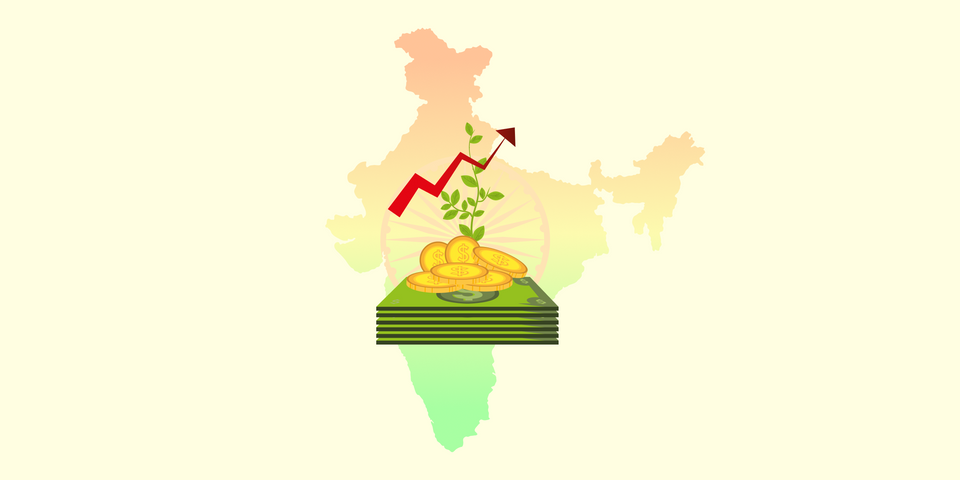India's Journey to a 10 Trillion Dollar Economy: Challenges and Opportunities

India, a land of rich cultural heritage and diverse landscapes, has been on a remarkable economic journey. As one of the world's fastest-growing major economies, it has set its sights on achieving the ambitious goal of becoming a 10 trillion dollar economy. This milestone represents a profound transformation for the country, but it comes with its own set of challenges and opportunities. In this blog, we delve into the factors that could propel India towards this target and the roadblocks that need to be overcome to realize this vision.
Economic Growth and Potential
India's economic growth story has been awe-inspiring. With a burgeoning young population and a rising middle class, the country possesses tremendous potential for economic expansion. Leveraging its abundant human capital and emerging technological advancements, India has the key ingredients to drive productivity and innovation across sectors.
Infrastructure Development
One of the critical components in India's journey to a 10 trillion dollar economy is the development of robust infrastructure. Investments in roads, railways, ports, airports, and digital connectivity will not only enhance domestic trade but also attract foreign investments, fostering economic growth and job creation.
Manufacturing and Industrialization
To achieve the ambitious goal, India must focus on accelerating its manufacturing sector. By promoting 'Make in India' initiatives, the country can reduce import dependence and boost exports, leading to a more self-reliant and competitive economy on the global stage.
Agricultural Reforms
A significant percentage of India's population is still dependent on agriculture. Empowering farmers through agricultural reforms, technology adoption, and better market access can contribute to increasing their income and drive rural prosperity.
Sustainable Development
India's journey towards a 10 trillion dollar economy must be balanced with sustainable practices. Emphasizing renewable energy, waste management, and conservation of natural resources will not only support economic growth but also preserve the environment for future generations.
Challenges on the Path
Income Disparity
Addressing income disparity is a crucial challenge in India's pursuit of economic growth. Ensuring inclusive development, equitable distribution of wealth, and access to education and healthcare for all citizens are essential steps in creating a prosperous and harmonious society.
Education and Skilled Workforce
Investing in education and skill development is vital for unleashing the full potential of India's human capital. A skilled workforce will drive innovation, increase productivity, and attract more foreign investments, fostering a conducive business environment.
Fiscal Prudence
Managing fiscal deficits and public debt is crucial to maintaining economic stability. Sound fiscal policies, transparent governance, and prudent financial management are imperative to sustain long-term growth.
Global Economic Uncertainty
India's path to a 10 trillion dollar economy is not insulated from global economic uncertainties. Navigating trade wars, geopolitical tensions, and the aftermath of the COVID-19 pandemic will require resilience and adaptability.
Conclusion
The vision of India becoming a 10 trillion dollar economy is both aspirational and challenging. With the right mix of policy reforms, strategic investments, and inclusive growth initiatives, India can inch closer to this milestone. By addressing key challenges and seizing opportunities, India can establish itself as a major economic powerhouse on the world stage, fostering prosperity for its people and contributing to the global economy. As the country embraces the future, the world eagerly awaits to witness the realization of this audacious goal.
FAQ
1. What is India's goal for its economy?
India aims to become a 10 trillion dollar economy, a milestone that represents a significant transformation and growth for the country.
2. What factors contribute to India's potential for economic growth?
Key factors include a young population, a rising middle class, abundant human capital, and technological advancements, all of which can drive productivity and innovation across sectors.
3. How important is infrastructure development in this journey?
Infrastructure development is critical. Investments in roads, railways, ports, airports, and digital connectivity will enhance domestic trade, attract foreign investments, and foster job creation and economic growth.
4. Why is the manufacturing sector crucial for India's economic goals?
Accelerating the manufacturing sector through initiatives like 'Make in India' can reduce import dependence, boost exports, and make India a more self-reliant and competitive economy on the global stage.
5. What role do agricultural reforms play in this vision?
Agricultural reforms are essential as a significant percentage of India's population depends on agriculture. Empowering farmers through technology adoption, better market access, and reforms can increase their income and drive rural prosperity.
6. How does sustainable development fit into India's economic goals?
Sustainable practices such as renewable energy, waste management, and conservation of natural resources are important to ensure that economic growth does not come at the expense of the environment, preserving it for future generations.
7. What challenges does India face on its path to becoming a 10 trillion dollar economy?
Income disparity, education and skilled workforce development, fiscal prudence, and global economic uncertainties are significant challenges that need to be addressed.
8. How can India address income disparity?
Ensuring inclusive development, equitable distribution of wealth, and access to education and healthcare for all citizens are essential steps in creating a prosperous and harmonious society.
9. Why is investing in education and skill development important?
A skilled workforce drives innovation, increases productivity, and attracts foreign investments, creating a conducive business environment and supporting long-term economic growth.
10. What does fiscal prudence entail for India's economic journey?
Managing fiscal deficits and public debt through sound fiscal policies, transparent governance, and prudent financial management is crucial for sustaining long-term economic stability and growth.
11. How can India navigate global economic uncertainties?
By being resilient and adaptable, India can navigate trade wars, geopolitical tensions, and the aftermath of the COVID-19 pandemic, ensuring that global economic uncertainties do not derail its growth plans.
12. What is the conclusion of this blog regarding India's economic vision?
The vision of India becoming a 10 trillion dollar economy is both aspirational and challenging. With the right policy reforms, strategic investments, and inclusive growth initiatives, India can achieve this milestone, establishing itself as a major economic powerhouse and fostering prosperity for its people and the global economy.






Member discussion